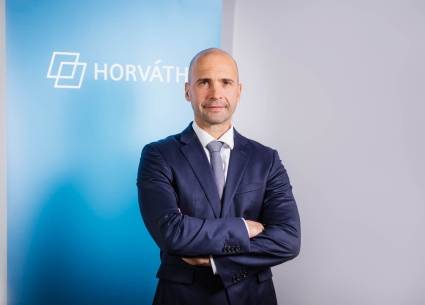John Lodder: 8 Trends Progressive Leaders base their strategy upon! Why?
Technological change is happening faster and faster. Jeff Desjardins, the editor-in-chief of Visual Capitalist and author of the book Signals: Charting the New Direction of the Global Economy argued “It is even faster than you think.”
His team charted major scientific advancements over time for the book and found that the pace of change in science and consumer technology has accelerated in the past 20 years and continues to accelerate.
Desjardins said “there is actually 40 times more data in terms of bytes than there are stars in the observable universe.” He added that the amount of data we are creating is doubling every two years. “If you think the last 10 years have been crazy…. wait till the next 10 year…. and then the next 10 years after that.”
Why is this important?
It is harder than ever for organizations to stay strong and competitive for the long term.
Another key Desjardins and his team looked at is the average age of companies on the S&P 500.
In 1965 the average company on the index was 33 years old, meaning that once a company got big and successful enough to make the index it tended to stick around for 33 years. Today the average companies are on the S&P 500 is just 12 years. Meaning: “50% of the companies on the S&P 500 that were there in 2018 will no longer be there in 2027!”
One might conclude that in a world that is changing faster than ever, it is harder than ever for organizations to successfully compete. Companies that are beating their competitors today could easily fall behind tomorrow.
Uncertainty also creates opportunity.
The impact of this accelerating speed also has a silver lining: “If you are a leader in a (smaller) company and you aspire to be on the S&P 500, well, the companies that are on that index are dropping out faster than ever.” That is a chance for
leaders who see opportunities in all the changes and developments, to leap ahead of their competitors. Desjardins said:
You have to be comfortable with the fact that there is uncertainty and, you have to let that uncertainty help you grow.’’
As a leader you have to be externally focused. You have to keep up with trends affecting your industry and the world at large. But keeping up with every possible trend would be overwhelming. So how do you stay alert for the opportunities created by uncertainty? “Zoom out and identify the most significant long-term trends!’’
You cannot argue against 700 years of falling interest rates, you cannot argue against the way that Environmental, Social, and Governance (ESG) is growing. If you have a good understanding of these foundations, making decisions about the future will become a lot clearer.”
As a leader you cannot jump on every trend or hype. But the major changes that will affect your industry will be much more evident if you look at longer-term, more established trends, like the rise of ESG Investing.
1 - So the first check for Leaders: Can you, as a Leader, see uncertainty as an opportunity?
Your next task is to be realistically optimistic right now.
These are challenging times to put it mildly. Our organizations are facing massive, historical change at a time when we as individuals are all stressed and worn down by a full year of living through a pandemic.
Actually, in challenging times even more than at any other time, we need our leaders to express optimism about the future. Noam Chomsky, American linguist and cognitive scientist, said it best:
Optimism is a strategy for making a better future! Because unless you believe that the future can be better, you are unlikely to step up and take responsibility for making it so.”
Based on Chomsky’s words, optimism and accountability are closely connected. Many teams and companies will need to transform to succeed in the coming years, and, you cannot drive changes if you do not believe that it is possible to change things for the better. If leaders are not excited about the future of their organizations, employees certainly will not. If leaders do not express optimism about the future, your employees will not feel it, either.
Expressing optimism is one of the 5 core behaviors that distinguish accountable leaders from unaccountable leaders.
Unaccountable leaders are often disengaged and do not truly believe the messages they are passing on to their teams. Accountable leaders, in contrast, are engaged and excited about the team’s goals and they communicate that enthusiasm to their teams.
Unfortunately, you cannot fake enthusiasm. Your people will see through you if you are just trying to put on a happy face or hype up a strategy you do not truly believe in. Your goal should not be to be a “rah-rah cheerleader” either.
Your people will know if you are presenting an overly rosy picture and one that may be detached from their own realities.
Employees are the closest to the customer and they carry much of the burden when teams are stretched thin.
Research shows that an optimistic work culture not only improves employees' lives, it also increases profits.
The challenge for leaders is to be realistic, yet feel optimistic and believe in their own positive messages.
That is the kind of grounded, yet optimistic tone you are aiming for as a leader in difficult times.
Optimism is a competitive advantage, not just an attitude! These are a few strategies to put optimism into action:
- Look for ways to bring optimism, positivity and celebration into your daily routines
- Create a sense of team spirit
- Focus on results and celebrate key milestones together with your team.
2 - So the second check for Leaders: Are you an optimistic, inspirational Leader?
Your next task is to spark your Team’s Autonomy and deepen their Commitment?
A Leaders’ most essential task is to help their people perform at their best and to contribute the most.
That means motivating your people to high performances. One of the most important aspects of motivation is ‘autonomy’.
Autonomy is one of the keys to high performance and that has much to do with trust.
We know that when people have some sovereignty over what they do, how they do it, when they do it, with whom they do it, they enjoy their jobs more, they engage more deeply, they perform at a much higher level.
Here are two suggestions that can help you increase the level of autonomy in your team.
a - Do an autonomy audit
An “autonomy audit” is a simple four-part questionnaire that can measure autonomy in your workplace.
- How much autonomy do you have over doing your tasks at work? Meaning your main responsibilities and what you do in a given day.
- How much autonomy do you have over your time at work? That is, when you show up, when you leave, and how you allocate your hours each day.
- How much say do you have over the people you work / collaborate with?
- How much autonomy do you have over your approach / techniques at work?
Let every member of your team answer each of these questions on a 1 (low) to 10 (high) scale.
(Four questions 1 to 10 will give you a sum total between 4 and 40 per team member.)
Then, as a team, together you exchange the scores of each team member and you as the leader keep the score.
Do not go into explaining / exchange now! Only ask for the scores and calculate!!
A few observations from my experiences with other teams:
First, you might be surprised by the scores that people give. Leaders always overstate how much autonomy their team has, so this could be a wake-up call.
Second, scores below 25 could indicate a worrying lack of autonomy that might limit the engagement and productivity your team could have.
Third, you might see that one of the five elements is very low while others are high. That low rating can be a real pain point and a real source of demotivation.
This audit might open your eyes, it could start an informative and constructive exchange with your people about how they really feel and how you can improve on their autonomy; thus their motivation, thus the way you can build a workplace in which people can deliver their highest performance for the company.
b - Create ‘islands of autonomy’ for your team
One of the best things you can do to improve autonomy in your workplace is to create an ‘island of autonomy’, meaning: give your team(s) time to work on ‘anything’ of their choice to improve ‘something’ in your organization.
But…make them accountable for a presentation of their end product.
There are so many examples, here just 4 of big companies that managed to dramatically increase autonomy, wellbeing, creativity, turn-over, profits and growth.
- A credit union in the state of Washington, where a new leader asked her team to leave their main duties behind for one hour every week and think big and bold. Something they knew they could offer credit union members, improve some internal process or name procedures they could get rid of, anything. And great ideas emerged.
- A team in Hewlett-Packard had ideas and nowadays HP regularly organizes free webinars, from the modern remote working place to Workplace as a Service (WaaS), from desktop virtualization to safe Working place solutions. The people got excited and sales and consultancy got up.
- The enormous success of Zalando, a web-company that transformed into a Holocracy, meaning no more managers and full autonomy for employees.
- At https://youtu.be/AhdjLXdxnFc you can watch the incredible transformation from a small Chinese company into a successful multinational: Haier. (6 minute video)
Such transformations became practice in many organizations by progressive Leaders who knew that autonomy is the pathway to wellbeing and thus motivation and commitment for employees and thus for stimulating creativity, innovation and profit for the company.
3 - So the third check for Leaders: Are you a Leader that stimulates Autonomy, Wellbeing and Profit?
After this pandemic we can still see many different types of Leaders worldwide, I just show 3:
8 Trends many progressive Leaders base their strategy upon
During visits to 150+ bold companies and talking with founders, CEOs and with all sorts of employees, 8 trends were uncovered that separate the most progressive workplaces from those riddled with frustration and despair.
FROM: TO:
1. Profit Purpose & values
2. Hierarchical pyramid Network of teams
3. Directive leadership Supportive leadership
4. Plan & predict Experiment & adapt
5. Rules & control Freedom & trust
6. Centralized authority Distributed decision making
7. Secrecy Radical transparency
8. Job descriptions Talents & mastery
Trend 1 – Toward Purpose & Values
Progressive organizations no longer focus solely on increasing shareholder value. They focus on building a workplace around common purpose and values. Because having purpose and meaning gives people the energy, passion and motivation to get out of bed in the morning. It also fosters communities of like-minded employees, customers, suppliers and others. They come together with shared ideals.
As a result, inspiring work cuts through bureaucracies, silos, and egos to unleash the potential of an organization.
To be clear: we are not talking about a mission statement full of pretentious banalities (or what Americans call corporate bullshit). We are talking about crisp and clear causes that activate people inside and outside the organization.
This purpose should be translated into organization, team and individual goals to ensure everyone is aligned.
Along with clarity of mission come values, behaviors and skills that are shared by colleagues.
Values are multifunctional within a business. They are not prescribed rules, but guidelines to speed decision-making, and not hiring based on skills (only), but also hiring for culture. Skills can be trained.
Case studies:
Patagonia, Hollands Kroon, Tony’s Chocolonely, Buurtzorg, Hutten, Beetroot.
Trend 2 – Toward a Network of Teams
Progressive organizations know the familiar pyramid is outdated. It simply does not fit with today’s quickly changing environment. The rigidity of command-and-control does not promote agility, speed, and engagement.
This is why we find progressive organizations tend to adopt alternative structures. Typically, they turn the rigid pyramid into an agile network of teams. Teams are often organized as networks of up to 15 people. They may be multidisciplinary. They are responsible for their own results. They are connected as needed to other networks to form networks of networks. Each team has skin in the game. They feel the impact of their (financial) successes and failures.
This increases responsibility, entrepreneurship, communication, adaptability and the willingness to support each other.
Case studies:
Haier, Handelsbanken, Buurtzorg, FAVI, Spotify, Inzar, K2K, Centigo, Viisi, Yash Pakka.
Trend 3 – Toward Supportive Leadership
Most command-and-control structures operate with a directive leadership style. Team leaders, supervisors, managers, vice presidents and directors ‘direct’ their subordinates. A form of leadership based on fear, control, and telling others what and how to do their job. It tends to neglect the wisdom of the crowd. It disengages those lower in the organization.
Within progressive organizations, we see another type of leadership: strong leaders who are supportive of those ‘closest to the customers’. They constantly challenge the status quo – the way we have always done things – and encourage the entire organization to do the same. These leaders walk the talk. They embody organization mission and values. They are crucial to an organization’s culture. They do everything in their power to remove barriers. They help their employees thrive. Authority is no longer linked to rank, but rather to the ability to lead by example.
Case studies:
Zingerman’s, FAVI, Haufe Umantis, UKTV, US Navy, FOD social Security, Happy Ltd.
Trend 4 - Toward Experiment & Adapt
Plan and predict is a fundamental principle of traditional management in which yearly budgeting, resource allocation and plans are all cascaded down the organization chart. But they are based on the false belief that we can (still) predict the future. The new reality is that, as the environment gets more complex, it is impossible to make precise predictions.
Adaptability is now much more important. Progressive organizations abandon guesses masquerading as precise predictions. They focus on experimentation instead. And they embrace experimentation in everything they do: products, ways of working, and even structures. Change is no longer a once-in-a-year event; it is a part of every-day work.
The adaptive organizations we have studied believe it is better to experiment and fail, than to never make mistakes at all.
Case studies:
Spotify, UKTV, u2i, Matt Black Systems, FOD Social Security, Nearsoft, Hollands Kroon.
Trend 5- Toward Freedom & Trust
One could argue that traditional organizations have such bureaucracy in place that ensures employees neatly follow the rules. It can be tempting to formulate a policy for what might happen. It ends up trying to predict and control the outcomes of what people do. More and more, this bureaucracy becomes a barrier to engagement and success.
It hinders autonomy, innovation and creativity. Thus it becomes a liability for the organization.
Progressive organizations, on the contrary, act on the belief that employees are responsible adults who can be trusted. They don’t need extensive control. They perform best when given a high degree of autonomy. They can be trusted to do their job in the way they see fit. They let employees decide where, when, how and with whom to work.
Case studies:
FOD Social Security, BvdV, Patagonia, Happy Ltd., u2i, Versa, K2K, Wildling Shoes.
Trend 6 – Toward Distributed Decision Making
An important feature of the traditional organization is centralization. This suggests that decision-making competence rises with the position in the hierarchy. This is obviously nonsense.
Progressive organizations tend to be highly decentralized. They act on the belief that employees on the frontline have the best understanding of customers, suppliers, and production machines. Therefore frontline employees should make the majority of the decisions if the aim is to be agile in responding to clients. In progressive organizations, we see distributed authority and decision-making. But be clear: with freedom of decision making comes responsibility and accountability.
Case studies:
USS Santa Fe, Haufe Umantis, Happy Ltd., u2i, Vagas, Buurtzorg, Handelsbanken, Smarkets, Morning Star, Semco.
Trend 7 – Toward Radical Transparency
Traditional organizations tend to limit valuable information only to the leaders. They then must call all the important shots. To be able to distribute authority to frontline employees requires a culture of radical transparency.
Frontline employees need access to the latest information for speedy and accurate decision-making.
Progressive organizations thrive when they are ‘open by default’. This policy turns radical transparency into a valuable tool. It fosters an ‘ask anything’ mentality. It requires more trust from both team members and leaders.
To make this a success, progressive organizations grant company-wide access to data, documents and financials - in real -time. They give people the right information at the right moment. This means better decisions, faster and problems solved sooner. It promotes collaboration in and outside the organization.
Case studies:
Patagonia, Smarkets, BvdV, Finext, Zingermans, Handelsbanken, Semco, Haier, Nearsoft, K2K, Viisi.
Trend 8 – Toward Talents & Mastery
Traditional organizations tend to distribute activities based on job titles and descriptions.
But many of these are out-of-date the moment they are crafted. This old habit forces people to work on things they are supposed to do, but not necessarily disposed to do. People prefer working on tasks they like, ones that fit their talents and strengths. We know that doing what you are good at increases motivation and engagement.
Progressive organizations leverage this dynamic. They try to make use of the diverse talents present in the whole organization. They offer people the freedom to choose their tasks and responsibilities. In progressive organizations, employees ‘sculpt’ their jobs based on their interest, talents and strengths. Often, a ‘work of art’ results!
Case studies:
NextJump, Bol.com, Spotify, Morning Star, Centigo, Nearsoft, Oticon, Buurtzorg, Cyberclick, H-Farm, Matt Black systems.
For this column I was inspired by: Daniel Pink, Dr. Vince Molinaro, Jeff Desjardins BC, Prof. dr. Lynda Gratton, Adam Fridman. Corporate Rebels.
Povezano aktualno

























